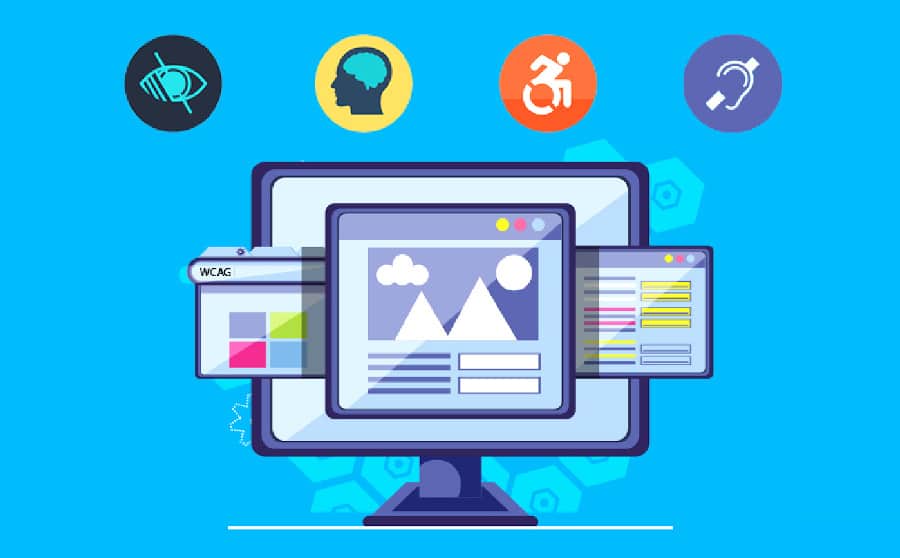Importance of Technological Accessibility and Inclusive Design
Technological Accessibility and Inclusive Design accessibility is to make sure that technology and digital content can be used by people

In a world where Technological Accessibility and Inclusive Design are an integral part of our daily lives, ensuring that it is accessible to everyone is not just a matter of convenience but a fundamental human right. Technological accessibility and inclusive design are essential pillars of a modern, equitable society. In this blog post, we will explore the significance of these principles, their impact on individuals and communities, and why they should be at the forefront of technological development.
Understanding Technological Accessibility and Inclusive Design
Technological accessibility is about making sure that technology and digital content can be used and understood by people with a wide range of abilities and disabilities. This includes individuals with visual, auditory, cognitive, motor, and other impairments. Accessibility goes beyond mere compliance with legal requirements; it is a commitment to inclusivity and social responsibility.
1. Equal Access to Information and Opportunities
In today's digital age, access to information is power. It empowers individuals to learn, work, communicate, and participate in society. Imagine being unable to access your online banking, apply for a job, or read important news articles because of a disability. Technological accessibility levels the playing field, ensuring that no one is left behind.
2. Diverse User Base
The user base of technology is incredibly diverse, encompassing people of all ages, backgrounds, and abilities. Neglecting accessibility means excluding a significant portion of this user base. By designing with accessibility in mind, tech companies can tap into new markets and expand their reach.
3. Legal and Ethical Obligations
Several countries have implemented laws and regulations that mandate digital accessibility. Ignoring these legal obligations can lead to lawsuits and tarnish a company's reputation. Beyond legality, it's an ethical responsibility to provide equal access to information and services to all members of society.
The Principles of Technological Accessibility and Inclusive Design
Inclusive design is a proactive approach that seeks to create products and environments that are usable by as many people as possible, regardless of their age, ability, or status. It goes beyond addressing disabilities and considers the diverse needs and preferences of all users.
1. Diversity and Inclusion
Inclusive design recognizes that diversity is a strength. It embraces different perspectives and experiences to create solutions that work for everyone. By involving people with disabilities in the design process, we can better understand their needs and preferences, leading to more inclusive products.
2. Flexibility and Customization
Inclusive design promotes flexibility and customization. It allows users to adapt technology to their specific needs. For example, text size and contrast settings in mobile devices or screen readers for visually impaired users. Providing these options ensures that technology can be tailored to individual preferences.
3. Simplicity and Clarity
Complexity is a barrier to accessibility. Inclusive design encourages simplicity and clarity in user interfaces and content. Clear instructions, intuitive navigation, and straightforward language benefit all users, not just those with disabilities.
The Impact of Technological Accessibility and Inclusive Design
Now that we've established the importance of technological accessibility and inclusive design, let's delve into their real-world impact.
1. Improved Quality of Life
For individuals with disabilities, accessible technology can be life-changing. It enables them to perform tasks independently, increasing their self-esteem and overall quality of life. Simple features like voice recognition software or screen readers can open up a world of possibilities for people who might otherwise be excluded from the digital sphere.
2. Enhanced Workforce Inclusion
Accessible technology plays a crucial role in workforce inclusion. Many individuals with disabilities are highly qualified and capable, but inaccessible technology can create barriers to employment. When companies prioritize accessibility, they can tap into a more diverse and talented pool of employees.
3. Business Opportunities
Inclusive design isn't just a social good; it's also a smart business strategy. Companies that prioritize accessibility can gain a competitive advantage by reaching a broader customer base. Moreover, accessible design often leads to improved user experiences for all users, increasing customer satisfaction.
4. Educational Equality
In the realm of education, technological accessibility is a game-changer. It ensures that students with disabilities have equal access to educational materials and digital learning platforms. Inclusive design in educational technology empowers students to learn and succeed on an equal footing with their peers.
Challenges and Solutions at Technological Accessibility
While the importance of technological accessibility and inclusive design is clear, there are challenges to overcome. Here are some common challenges and potential solutions:
1. Awareness and Education
Challenge: Many designers and developers are unaware of the principles of accessibility and inclusive design.
Solution: Promote awareness through training and education. Encourage tech companies and educational institutions to incorporate accessibility into their curricula and professional development programs.
2. Cost and Resources
Challenge: Designing for accessibility can be seen as an additional cost, especially for small businesses or startups.
Solution: Highlight the long-term benefits of accessibility, including expanded customer bases and reduced legal risks. Additionally, government incentives and grants are available in some regions to support accessibility initiatives.
3. Changing Attitudes
Challenge: Attitudes towards disability and accessibility can be a barrier to progress.
Solution: Foster a culture of inclusion within organizations and society at large. Showcase success stories of accessible technology making a positive impact.
4. Evolving Technology
Challenge: Technology is constantly evolving, which can pose challenges in maintaining accessibility.
Solution: Stay up-to-date with accessibility guidelines and standards. Regularly test and update digital content and products to ensure ongoing accessibility.
Technological accessibility and inclusive design are not optional add-ons; they are essential components of a fair and equitable society. As technology continues to advance, we must ensure that it benefits everyone, regardless of their abilities or circumstances.
By prioritizing accessibility and embracing inclusive design principles, we can create a future where technology enhances the lives of all individuals, fosters workforce inclusion, and drives business innovation. It's not just the right thing to do; it's the smart thing to do.
As consumers and advocates, we can support companies and organizations that prioritize accessibility. By doing so, we contribute to a more inclusive, diverse, and prosperous digital landscape for all. Together, we can build a world where technology truly leaves no one behind.
What's Your Reaction?
















